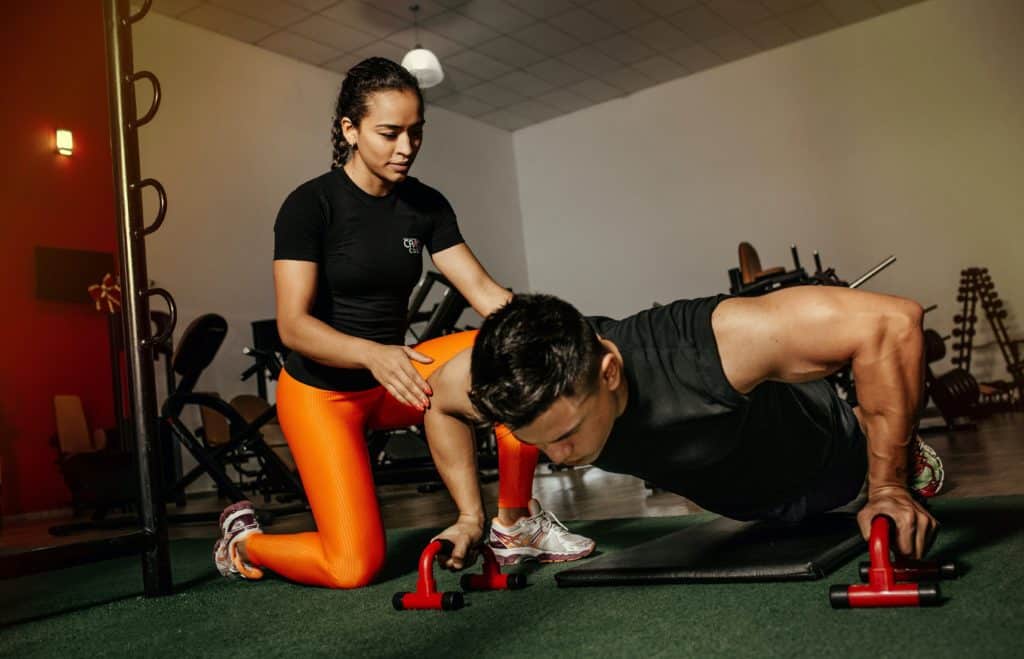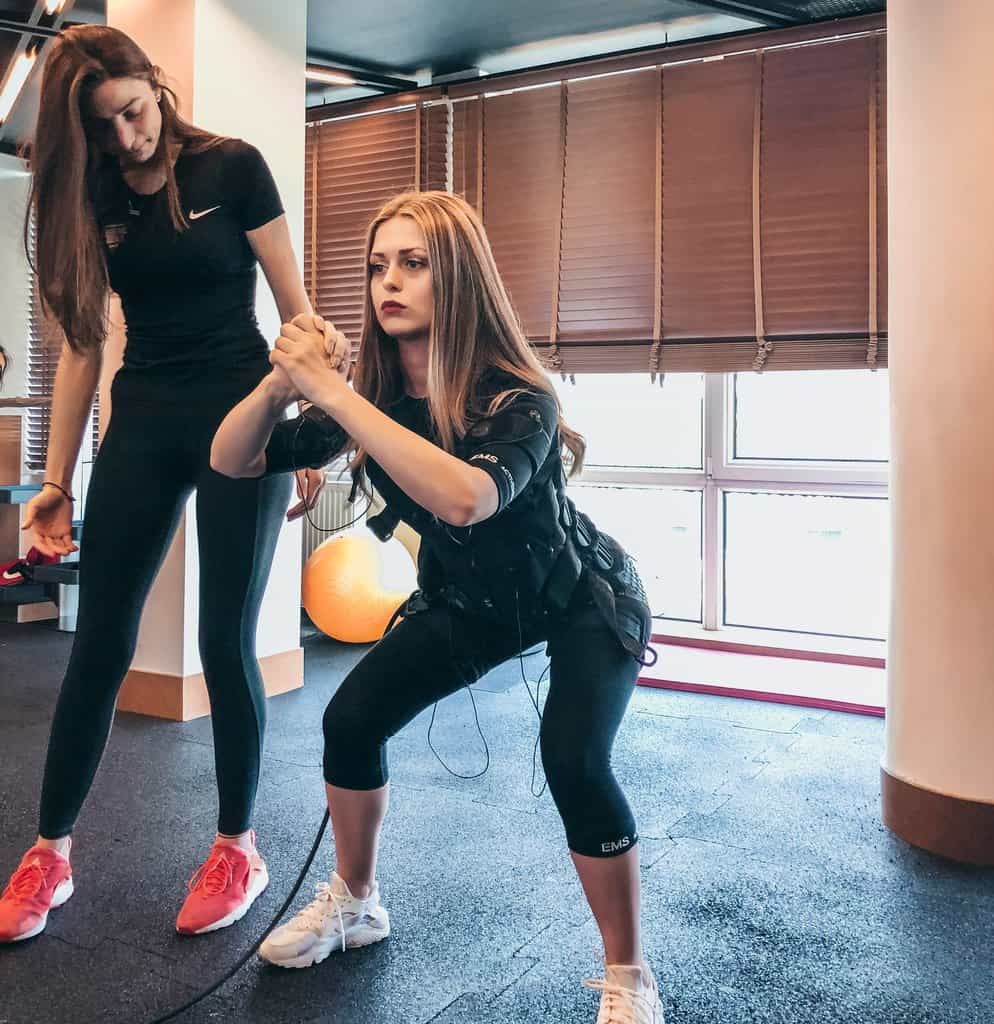
Fitness can be overwhelming, especially for beginners. There is so much contradictory information all over the internet that it can be hard to even know where to start. A personal trainer can help you navigate through all the nonsense and get you off on the right foot.
In addition, it’s much easier to develop habits from scratch than to break bad habits. People who have established poor lifting form on exercises can have a hard time correcting their technique. Having a personal trainer from the start can make sure your exercise technique is proper, and also lower the incidence of injury.
At the same time personal training is an expense, a luxury one at that for most people. It’s likely unnecessary to pay a trainer every day for a variety of reasons. The balance is in finding the optimal amount of personal training time to see results while keeping it a reasonable expense.
A beginner should see a personal trainer three times per week. This frequency allows them to learn exercise technique and see physique changes while keeping it as an affordable expense in the short term.
A personal training session usually lasts between 30 and 60 minutes. Thirty minutes may seem like a short amount of time, but you’d be surprised with what you can accomplish if the trainer is mindful of time. Implementing techniques like supersets, drop sets, and circuit training can help to get adequate workout volume in that time frame.
There is a certain threshold of exercise volume and frequency required to see results. Luckily, for beginners, this is only about three workouts per week. As a beginner becomes more advanced, the body requires more work to see changes.
What also happens as a beginner becomes more advanced is that they don’t have to rely on the trainer as much. They will become more knowledgeable and comfortable with the movements, thus they can begin to work out on their own safely and effectively.
General progress in the gym is not linear, whether it’s in the form of muscle gain, fat loss, or improving performance. Eventually the results slow down. The interesting thing is that many people go back to a personal trainer after a couple years of lifting to help break through a plateau.
A good personal trainer will be able to show you more than just the basic movements. They will be able to show advanced techniques and also teach how to set up a program for long term results. There are many people who show up to the gym and know how to work out, but randomly choose exercises with no strategy behind it.
Periodization is the concept of formatting a routine with different rep ranges to ensure the trainee continues to make progress. Other variables that are important with periodization include exercise selection, deloads, and rest periods.

When compared to other research areas, exercise science is still relatively unexplored. As a result, new data is constantly emerging related to improvements in strength, muscle, and athletic performance. Most professional athletes have a personal trainer they work with in the offseason, so there is always something to learn whether you are a beginner or advanced.
The barrier to entry to become a personal trainer is quite low. There is no formal schooling involved, just a written test you have to pass. As a result, there are many personal trainers out there who just aren’t very good.
The best way to find a good trainer is through word of mouth. Referrals from friends or family members are a direct indication of the trainer’s knowledge, personality, and reliability.
How Long Does it Take to See Results with a Personal Trainer
Most people see a personal trainer to change their body, but the first thing they will notice is an improvement in strength.
Every exercise starts with a signal from the brain to the working muscle to perform the movement. Initially this can be awkward. An exercise may be difficult to perform because the body isn’t quite sure what to do yet. Your arms may shake and you may feel unbalanced or uncoordinated.
Over time the signal from mind to muscle becomes more efficient, and the exercise becomes easier to perform. The weight suddenly feels lighter and the movement is smoother. This neural adaptation causes an increase in strength, even though there hasn’t been a tangible change in muscle size.
Muscle growth takes a bit longer than strength development. Muscle is a dense tissue that takes time to grow.
Fat loss can occur more quickly. Obviously achieving the desired physique is dependent on how much body fat there is to lose in the first place.
At a rate of three personal training sessions per week, you can expect to see noticeable results in about 12-16 weeks. This rate is based on a general goal of toning the body; a combination of muscle growth and fat loss. A proper diet will augment results further.
Beginners will experience considerable muscle growth since they are nowhere near their genetic muscle building ceiling. They are essentially a blank slate, and the body will respond quickly to this new stimulus of weight training.
Muscle growth is not linear however, and the law of diminishing returns will eventually set in. Most people put on more muscle mass in the first two years of serious lifting than all the subsequent years that follow combined. The results slow down the closer one gets to their natural muscle building limit.
In this sense, exercise is like any other skill development. For example, in the first two years of learning a language you can go from knowing absolutely nothing to being able to have a basic conversation. The years after are basically fine tuning the skill.
Building a physique is the same way. There is a great deal of muscle growth in the first two years, and the years that follow consist of making small improvements to specific lagging body parts.
As mentioned previously, it’s important to make changes to the routine as you get more advanced. The body builds muscle as an adaptation to the stress of lifting weights. If you perform the same routine over and over, muscle growth will not occur since the body has already adapted.
How Long Should I Stay With a Personal Trainer
As a personal trainer, I can confidently say that people train for two reasons; knowledge and accountability. Some people are new to the gym and have no idea what to do, so they hire a trainer to ensure they’re exercising correctly and don’t get injured.
A self-motivated individual can pick up exercise technique from a personal trainer in a few months and then go off on their own. Well they obviously don’t know every intricate detail about exercise, they know enough to put together a basic workout plan for themselves.
But for some people, knowledge is not the issue. Many of my clients know perfectly well how to work out and set up a routine, but need the accountability of a personal trainer. Some people have a workout partner for accountability purposes, but it can be hard to find someone reliable.
Accountability is one of the oldest motivational techniques. It ranges from simply telling someone about your goals to actually hiring someone to watch over you, like a personal trainer. We don’t want the guilty feeling of letting people down. If a client cancels a training session because they’re tired, they know they are messing up the trainer’s schedule and may even be charged for the session.
Countless times I have heard “if I didn’t hire you, I wouldn’t have worked out today.”
And this is fine. Personally, I don’t need accountability to work out because I enjoy it, but I may need it for other aspects of life.
In the end, it’s just about getting healthy and fit, no matter what it takes to get there. Whether it’s using a personal trainer to learn technique or to keep you on track forever, the end goal of improving one’s health is what’s most important.
Related Posts
Protein powder is one of the most widely consumed dietary supplements in the world today. In fact, most people look at it as a food product more than a typical supplement found in vitamin...
Protein supplements are a convenient way to help one reach the daily protein requirements needed to optimally build muscle and recover from workouts. Protein bars and protein shakes are far more...
